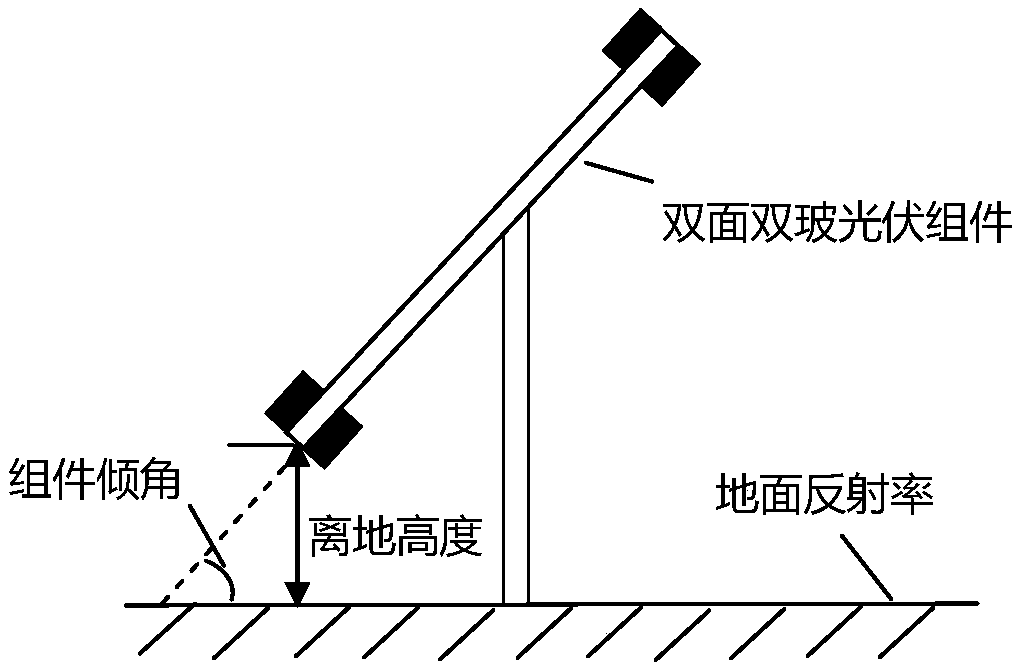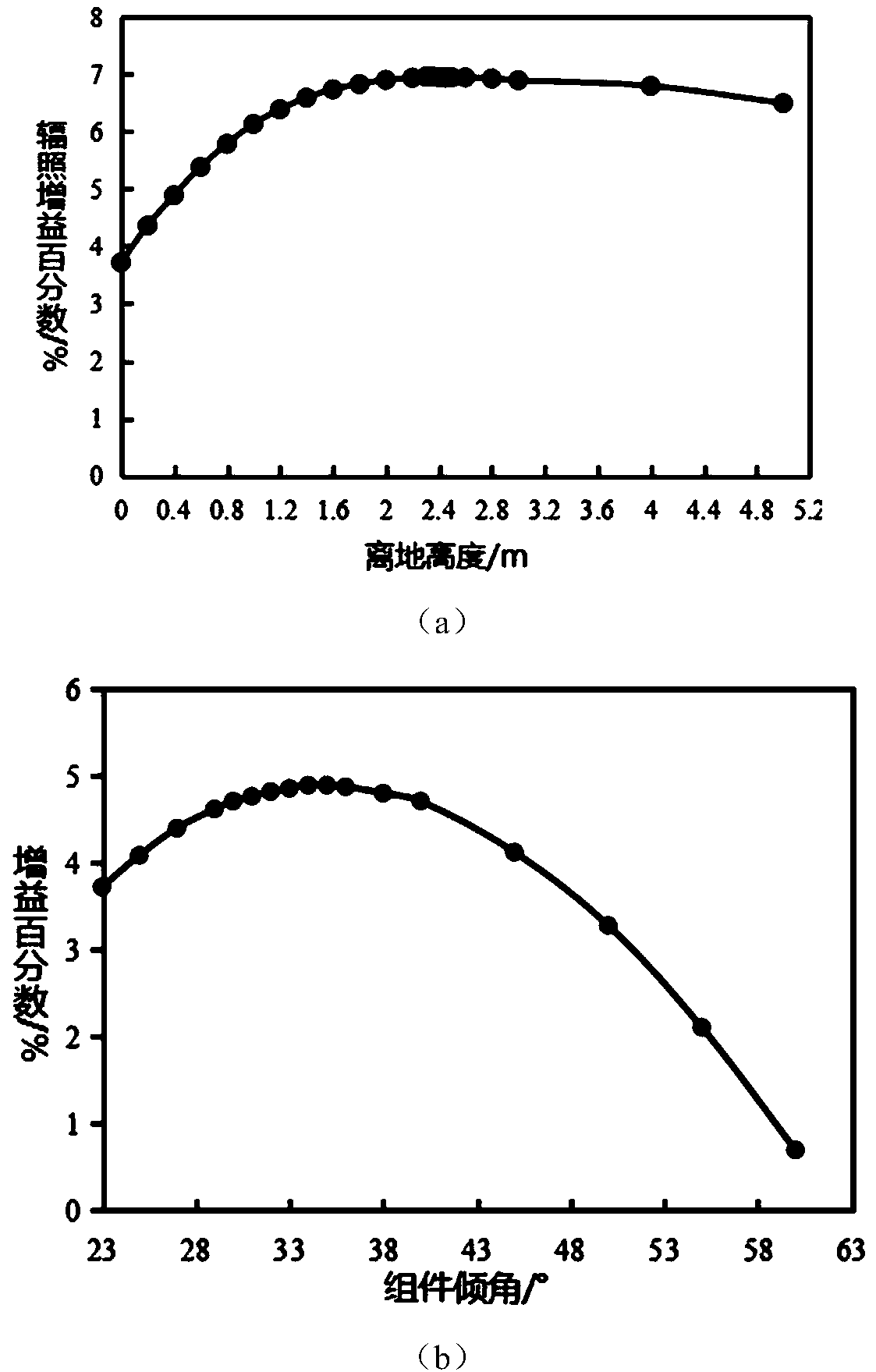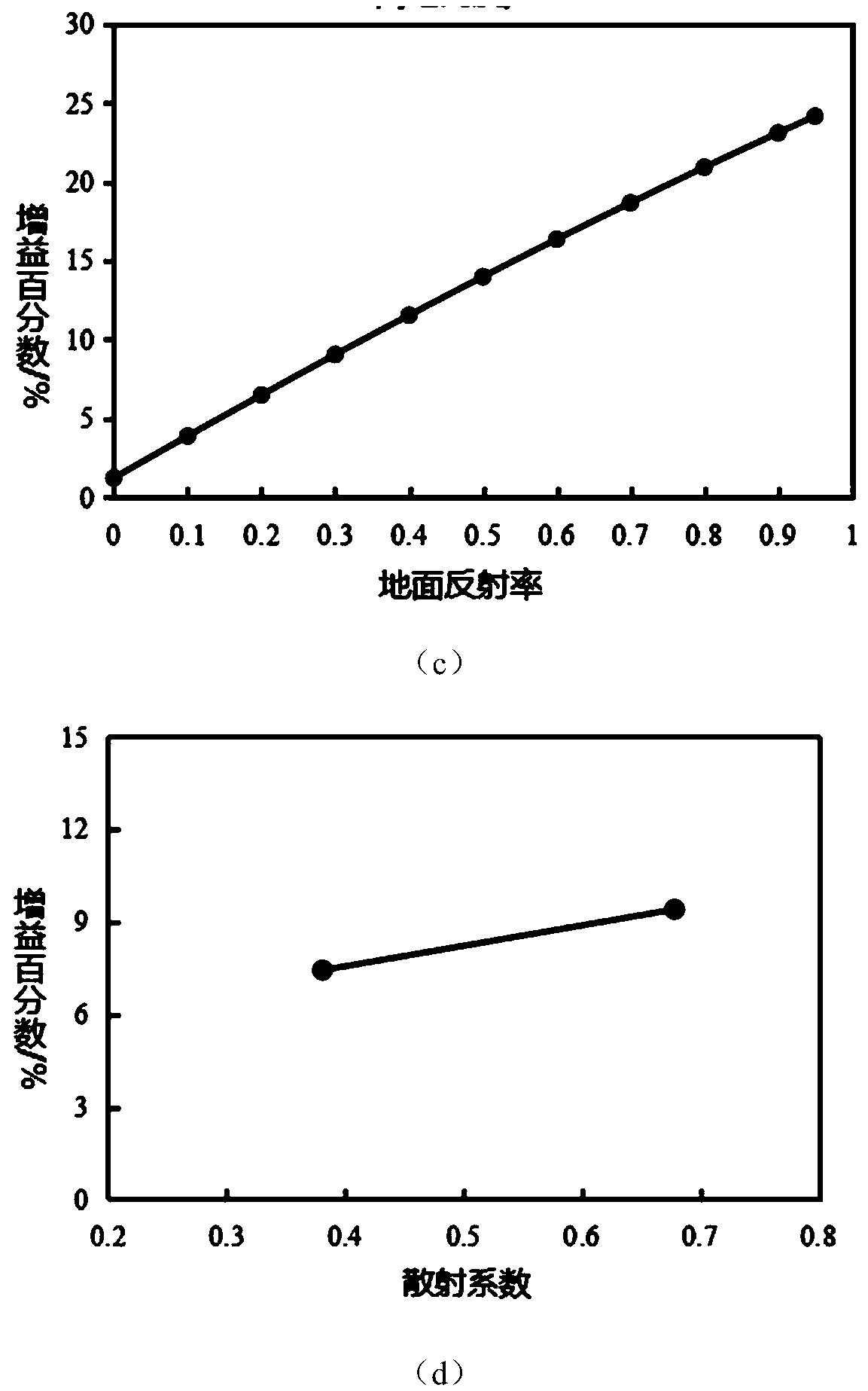A method for evaluating irradiation gain of a double-sided double-glass photovoltaic module based on regression analysis
A double-glass photovoltaic and regression analysis technology, applied in the field of photovoltaic system radiation analysis, can solve problems such as not taking into account scattering, inconvenience, installation methods that cannot be fully applied to double-sided double-glass photovoltaic modules, etc.
- Summary
- Abstract
- Description
- Claims
- Application Information
AI Technical Summary
Problems solved by technology
Method used
Image
Examples
Embodiment
[0065] In the embodiment of the present invention, the time unit for the calculation of the irradiation gain of the double-sided double-glass photovoltaic module is year. Since the experimental period of the year unit is long and the amount of data is large, the embodiment here uses the newly added double-sided system module of PVsyst to The minimum edge-to-ground height of double-sided double-glass photovoltaic modules, module inclination angle, and ground reflectivity are controlled, and several meteorological data representing cities are selected to represent the situation of different scattering coefficients. The annual radiation of double-glass photovoltaic modules, and then calculate the radiation gain. The radiation gain is the percentage increase of the annual total radiation of the front and back sides of double-sided double-glass photovoltaic modules relative to the annual radiation of conventional single-sided photovoltaic modules. example.
[0066] When simulating ...
PUM
 Login to View More
Login to View More Abstract
Description
Claims
Application Information
 Login to View More
Login to View More - R&D
- Intellectual Property
- Life Sciences
- Materials
- Tech Scout
- Unparalleled Data Quality
- Higher Quality Content
- 60% Fewer Hallucinations
Browse by: Latest US Patents, China's latest patents, Technical Efficacy Thesaurus, Application Domain, Technology Topic, Popular Technical Reports.
© 2025 PatSnap. All rights reserved.Legal|Privacy policy|Modern Slavery Act Transparency Statement|Sitemap|About US| Contact US: help@patsnap.com



